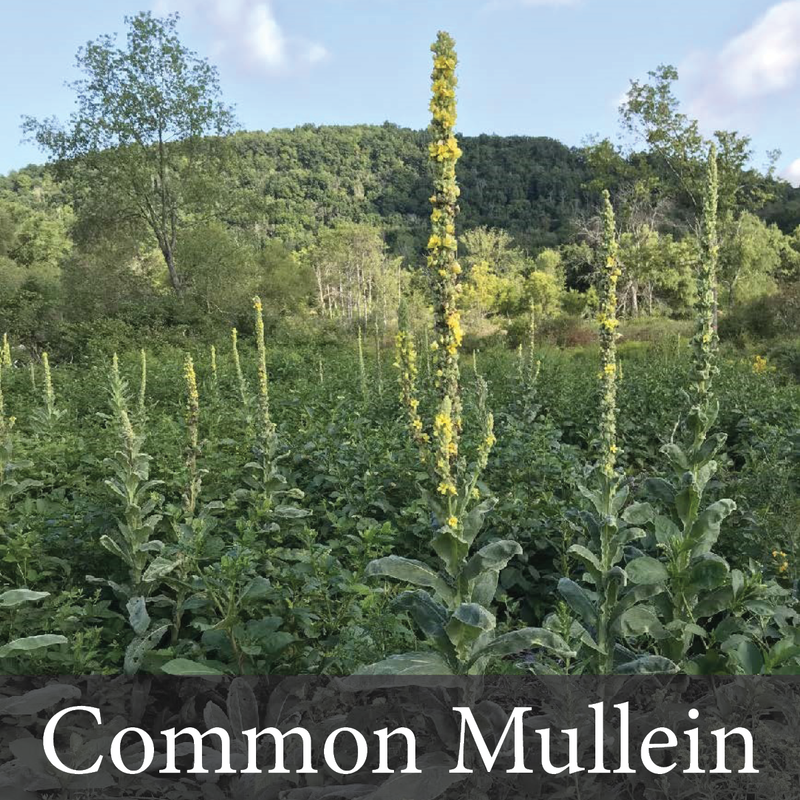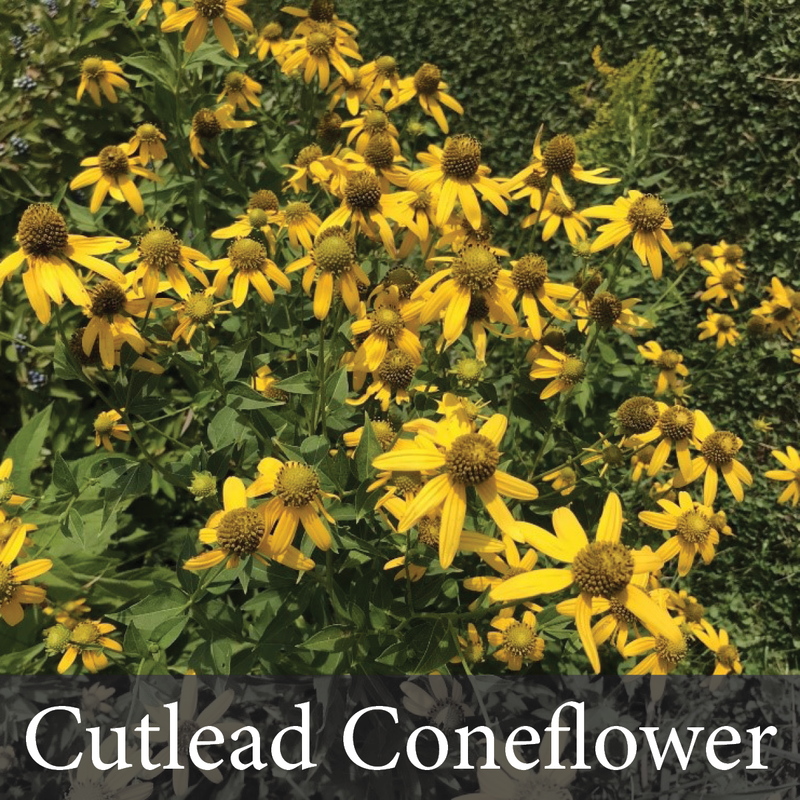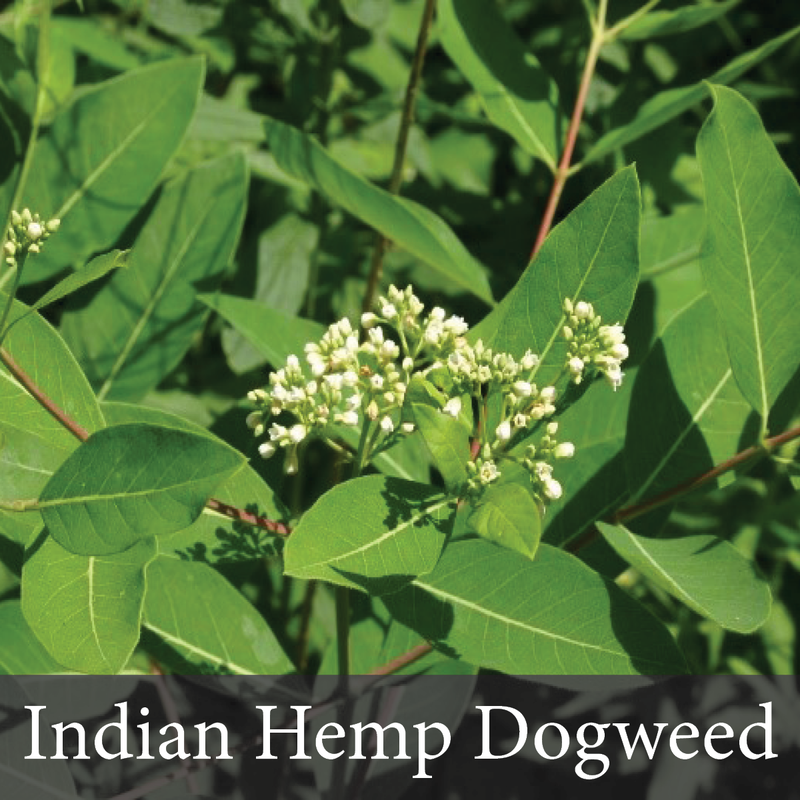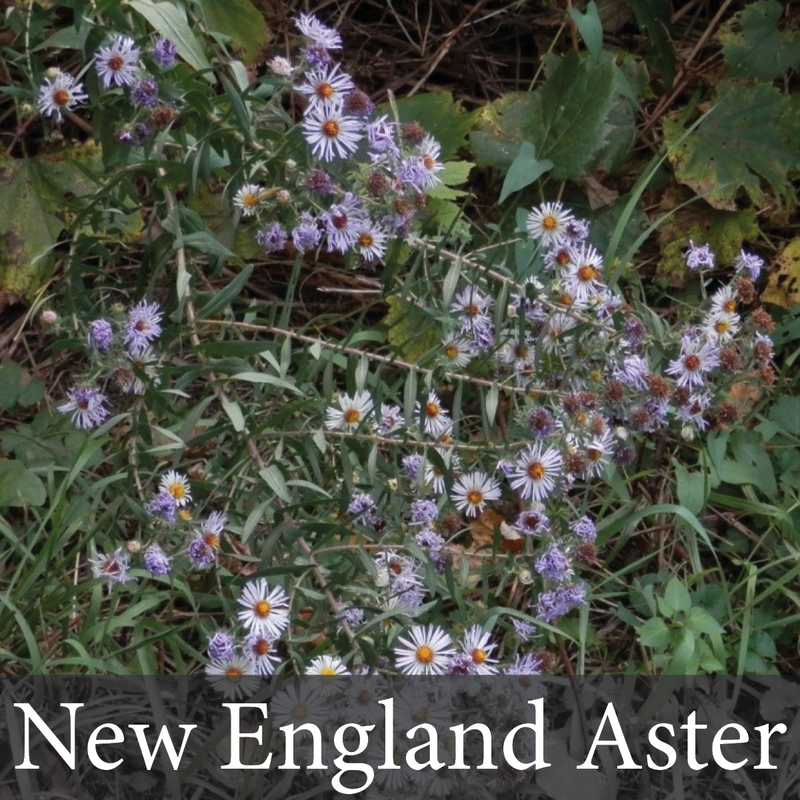Wilbur Beers Natural Area - Native Pollinator Plants
Without native plants, things would look a lot different. Fishing and hunting would be impacted. The vegetation that grows on your favorite mountains and lakes would be different. And the ability of farmers to produce healthy food would be challenged. And we need them, not just in our “wild” places. Across the United States, greater than 80% of land is privately managed, which means there is an opportunity to restore large amounts of native plants.
Visit the Wilbur Beers Nature Area and you will see these native pollinator plants in action!
Visit the Wilbur Beers Nature Area and you will see these native pollinator plants in action!
CLICK ON THE PICTURES BELOW TO LEARN MORE ABOUT EACH SPECIES!
*Note: This information is not to be used as an official medical endorsement by the Bradford County Conservation District in the treatment of any human disease, condition or symptoms. Never attempt to use wild plants as herbal remedies, food or drink without first consulting with an experienced herbalist and your physician. BCCD can't be held liable for the misuse, side-effects and/or any other negative consequences that may or may not occur while using wild plants for human food, drink or medicine.
Native Wetland Plants
Zone 1-Wet Zone This area will be the deepest and hold the most water for the most amount of time. The plants listed below are tolerant of inundated (flooded) conditions upwards of six inches, meaning that they can tolerate standing water for a period of time. The rain garden should be designed so that water infiltrates within 24 hours.
Shrubs
Black chokeberry (Aronia melanocarpa)*
Buttonbush (Cephalanthus occidentalis)*
Elderberry (Sambucus canadensis)*
Ninebark (Physocarpus opulifolius)*
Possumhaw (Viburnum nudum)*
St. Johnswort (Hypericum densiflorum)*
Silky dogwood (Cornus amomum)*
Smooth alder (Alnus serrulata)*
Spicebush (Lindera benzoin)*
Swamp azalea (Rhododendron viscosum)
Swamp rose (Rosa palustris)
Wild raisin (Viburnum cassinoides)*
Winterberry (Ilex verticillata)*
Perennials and ferns
Blue flag iris (Iris versicolor)
Blue vervain (Verbena hastata)*
Boneset (Eupatorium perfoliatum*)
Cardinal flower (Lobelia cardinalis)*
Cinnamon fern (Osmunda cinnamomea)*
Golden ragwort (Senecio aureus)*
Goldenrod (Solidago patula, S. rugosa)*
Great blue lobelia (Lobelia siphlitica)*
Green bullrush (Scirpus atrovirens)
Horsetail (Equisetum species)
Marsh marigold (Caltha palustris)*
Monkey flower (Mimulus ringens)
New England aster (Aster novae-anglia)*
New York aster (Aster novi-belgii)
Royal fern (Osmunda regalis)
Seedbox (Ludwigia alternifolia)
Sensitive fern (Onoclea sensibilis)*
Sneezeweed (Helenium autumnale)*
Soft rush (Juncus effusus)*
Swamp milkweed (Asclepias incarnata)*
Swamp rose mallow (Hibiscus moscheutos)
Swamp sunflower (Helianthus angustifolius)*
Switchgrass (Panicum virgatum)*
Tussock sedge (Carex stricta)
White turtlehead (Chelone glabra)*
Woolgrass (Scirpus cyperinus)*
Trees
Bald cypress (Taxodium distichum)*
Birch (Betula lenta, Betula nigra)*
Black gum (Nyssa sylvatica)*
Black willow (Salix nigra)*
Hemlock (Tsuga canadensis)*
Pin oak (Quercus palustris)
Pond pine (Pinus palustris)*
Red maple (Acer rubrum)
Swamp oak (Quercus bicolor)
Sweet gum (Liquidambar styraciflua)*
Sycamore (Plantanus occidentalis)*
*Note: Species noted with an asterisk (*) are also typically suitable for Zone 2 of the rain garden.
Zone 2-Mesic (middle) ZoneThis area will hold water but will drain much sooner than Zone 1. This zone is likely to hold several inches of water during and immediately after a rain event, depending on construction of the raingarden.
Shrubs
American beautyberry (Calicarpa americana)
Broad-leaved meadowsweet (Spirea latifolia)
Inkberry (Ilex glabra)
Narrow-leaved meadowsweet (Spirea alba)
Red-osier dogwood (Cornus sericea)
Sweet pepperbush (Clethra alnifolia)
Virginia sweetspire (Itea virginica)
Perennials
Blue false indigo (Baptisia australis)
Blue star (Amsonia tabernaemontana)
Boltonia (Boltonia asteroides)
Bottlebrush grass (Hystrix patula)
Broomsedge (Andropogon virginicus)
Culvers root (Veronicastrum virginicum)
Mistflower (Eupatorium colestinum)
Obedient plant (Physotegia virginiana)
Threadleaf coreopsis (Coreopsis verticillata)
Trees
Fringetree (Chionanthus virginicus)
Ninebark (Physocarpus opulifolius)
Paw paw (Asmina triloba)
Red maple (Acer rubrum)
Serviceberry (Amelanchier arborea, A.canadensis and A. laevis)
Note: See also the plants listed in Zone 1 marked with an asterisk (*).
Zone 3-Transition ZoneThe upper or transition zone between the rain garden and the non-garden area. This area will receive water infrequently; during very heavy rain events and will drain the fastest. It will be the most similar to typical garden areas, depending on the individual's watering practices. Almost any typical garden plant will work in this zone. Just be sure to use native plants to enhance wildlife habitat.
Shrubs
American cranberry bush (Viburnum trilobum)
Black chokeberry (Aronia melanocarpa)
Bush cinquefoil (Potentilla fruticosa)
Fragrant sumac (Rhus aromatica)
Gray Dogwood (Cornus racemosa)
New Jersey tea (Ceanothus americanus)
St. Johnswort (Hypericum densiflorum)
Sweet pepperbush (Clethra alnifolia)
Virginia sweetspire (Itea virginica)
Witch hazel (Hammamelis virginiana)
Yellow root (Xanthorhizza simplicissima)
Perennials
Anise hyssop (Agastache foeniculum)
Blazing star (Liatris spicata)
Blue star (Amsonia tabernaemontana)
Boltonia (Boltonia asteroides)
Butterfly weed (Asclepias tuberosa)
Calico aster (Aster lateriflorus)
Evening primrose (Oenothera speciosa)
Golden aster (Chrysopsis mariana)
Green and gold (Chrysogonum virginianum)
Mistflower (Eupatorium colestinum)
Threadleaf coreopsis (Coreopsis verticillata)
Tickseed (Coreopsis tinctoria)
Trees
Buckeye (Aesculus pavia and A. parviflora)
Carolina silverbell (Halesia caroliana)
Staghorn sumac (Rhus typhina)
Zone 1-Wet Zone This area will be the deepest and hold the most water for the most amount of time. The plants listed below are tolerant of inundated (flooded) conditions upwards of six inches, meaning that they can tolerate standing water for a period of time. The rain garden should be designed so that water infiltrates within 24 hours.
Shrubs
Black chokeberry (Aronia melanocarpa)*
Buttonbush (Cephalanthus occidentalis)*
Elderberry (Sambucus canadensis)*
Ninebark (Physocarpus opulifolius)*
Possumhaw (Viburnum nudum)*
St. Johnswort (Hypericum densiflorum)*
Silky dogwood (Cornus amomum)*
Smooth alder (Alnus serrulata)*
Spicebush (Lindera benzoin)*
Swamp azalea (Rhododendron viscosum)
Swamp rose (Rosa palustris)
Wild raisin (Viburnum cassinoides)*
Winterberry (Ilex verticillata)*
Perennials and ferns
Blue flag iris (Iris versicolor)
Blue vervain (Verbena hastata)*
Boneset (Eupatorium perfoliatum*)
Cardinal flower (Lobelia cardinalis)*
Cinnamon fern (Osmunda cinnamomea)*
Golden ragwort (Senecio aureus)*
Goldenrod (Solidago patula, S. rugosa)*
Great blue lobelia (Lobelia siphlitica)*
Green bullrush (Scirpus atrovirens)
Horsetail (Equisetum species)
Marsh marigold (Caltha palustris)*
Monkey flower (Mimulus ringens)
New England aster (Aster novae-anglia)*
New York aster (Aster novi-belgii)
Royal fern (Osmunda regalis)
Seedbox (Ludwigia alternifolia)
Sensitive fern (Onoclea sensibilis)*
Sneezeweed (Helenium autumnale)*
Soft rush (Juncus effusus)*
Swamp milkweed (Asclepias incarnata)*
Swamp rose mallow (Hibiscus moscheutos)
Swamp sunflower (Helianthus angustifolius)*
Switchgrass (Panicum virgatum)*
Tussock sedge (Carex stricta)
White turtlehead (Chelone glabra)*
Woolgrass (Scirpus cyperinus)*
Trees
Bald cypress (Taxodium distichum)*
Birch (Betula lenta, Betula nigra)*
Black gum (Nyssa sylvatica)*
Black willow (Salix nigra)*
Hemlock (Tsuga canadensis)*
Pin oak (Quercus palustris)
Pond pine (Pinus palustris)*
Red maple (Acer rubrum)
Swamp oak (Quercus bicolor)
Sweet gum (Liquidambar styraciflua)*
Sycamore (Plantanus occidentalis)*
*Note: Species noted with an asterisk (*) are also typically suitable for Zone 2 of the rain garden.
Zone 2-Mesic (middle) ZoneThis area will hold water but will drain much sooner than Zone 1. This zone is likely to hold several inches of water during and immediately after a rain event, depending on construction of the raingarden.
Shrubs
American beautyberry (Calicarpa americana)
Broad-leaved meadowsweet (Spirea latifolia)
Inkberry (Ilex glabra)
Narrow-leaved meadowsweet (Spirea alba)
Red-osier dogwood (Cornus sericea)
Sweet pepperbush (Clethra alnifolia)
Virginia sweetspire (Itea virginica)
Perennials
Blue false indigo (Baptisia australis)
Blue star (Amsonia tabernaemontana)
Boltonia (Boltonia asteroides)
Bottlebrush grass (Hystrix patula)
Broomsedge (Andropogon virginicus)
Culvers root (Veronicastrum virginicum)
Mistflower (Eupatorium colestinum)
Obedient plant (Physotegia virginiana)
Threadleaf coreopsis (Coreopsis verticillata)
Trees
Fringetree (Chionanthus virginicus)
Ninebark (Physocarpus opulifolius)
Paw paw (Asmina triloba)
Red maple (Acer rubrum)
Serviceberry (Amelanchier arborea, A.canadensis and A. laevis)
Note: See also the plants listed in Zone 1 marked with an asterisk (*).
Zone 3-Transition ZoneThe upper or transition zone between the rain garden and the non-garden area. This area will receive water infrequently; during very heavy rain events and will drain the fastest. It will be the most similar to typical garden areas, depending on the individual's watering practices. Almost any typical garden plant will work in this zone. Just be sure to use native plants to enhance wildlife habitat.
Shrubs
American cranberry bush (Viburnum trilobum)
Black chokeberry (Aronia melanocarpa)
Bush cinquefoil (Potentilla fruticosa)
Fragrant sumac (Rhus aromatica)
Gray Dogwood (Cornus racemosa)
New Jersey tea (Ceanothus americanus)
St. Johnswort (Hypericum densiflorum)
Sweet pepperbush (Clethra alnifolia)
Virginia sweetspire (Itea virginica)
Witch hazel (Hammamelis virginiana)
Yellow root (Xanthorhizza simplicissima)
Perennials
Anise hyssop (Agastache foeniculum)
Blazing star (Liatris spicata)
Blue star (Amsonia tabernaemontana)
Boltonia (Boltonia asteroides)
Butterfly weed (Asclepias tuberosa)
Calico aster (Aster lateriflorus)
Evening primrose (Oenothera speciosa)
Golden aster (Chrysopsis mariana)
Green and gold (Chrysogonum virginianum)
Mistflower (Eupatorium colestinum)
Threadleaf coreopsis (Coreopsis verticillata)
Tickseed (Coreopsis tinctoria)
Trees
Buckeye (Aesculus pavia and A. parviflora)
Carolina silverbell (Halesia caroliana)
Staghorn sumac (Rhus typhina)
|
Bradford County Conservation District
Stoll Natural Resource Center 200 Lake Road, Suite E | Towanda PA 18848 Phone: (570)-485-3144 |
















